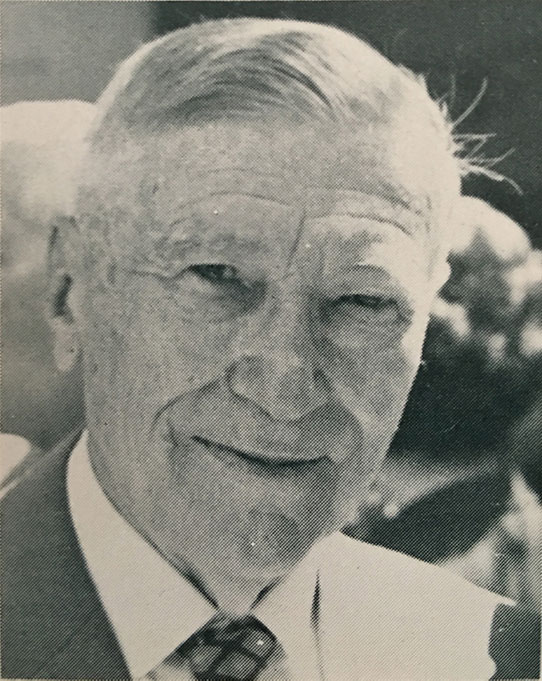Maya Ethnographer and Archaeologist
Born in Martigny, Switzerland on October 30, 1898; died in Guatemala City, Guatemala on December 25, 1982. His parents were Joseph Girard, a public works businessman, and Melanie Besse de Girard, elementary schoolteacher, who died when Raphael was 14; although a firstborn child, he had numerous siblings. From an early age he showed intellectual skills. In 1915 he published Le Centenaire Valaisan, followed by Sur le Trim, dedicated to Dr. Zarn, a professor at the Lycée St. Maurice.
In 1918 he served 4th Company, XII Batallion mountain infantry of the Swiss Army.
On January 10, 1919, with the support of Eugene Pittard of Geneva University, prince Roland Bonaparte, Paul Rivet and Alfred Grandidier, he joined the Society of History and Geography of Paris. He then sailed to Honduras, where with the collaboration of fellow anthropologist pioneers Esteban Guardiola, Luis Land, Félix Salgado, Pedro Rivas and Jesús Aguilar founded the Honduran Society of History and Geography. He then completed ethnographic works about the the Hicaques, Payas, Caribss, Miskitos, and Susmus.
In 1935 he graduated as an electrical engineer of the Chicago Institute of Engineering; then, with savings and loans, he started an electric business in Copán, Honduras, followed by similar businesses in Quetzaltepeque and Esquipulas, Guatemala. It was at this time that he was introduced to the Chortí, a Mayan community. In 1949 he published in Spanish The Chortí and the Mayan Problem.
In 1950, with his colleague Lobsiger Dellenbach, he founded the Societé Suisse des Amaricanistes in Geneva. In 1952 he promoted the International Institute of Archaeocivilization seated in Paris, and the International Association for the study of History Religions of Amsterdam. During thses years, on his own, he conducted archaeological excavations in Guatemala, El Salvador and Honduras. In the Honduran Mosquitia he discovered previously unknown archaeological sites and new sculptures in Monte Alto and La Gomera, Guatemala, and the Sierra Apaneca in El Salvador. These discoveries proved useful to definitively establish the cultural horizon of the Maya preclassical period.
In December 1955 he married Peruvian archaeologist Rebeca Carrión Cachot in Lima but moved to Guatemala. Together they collaborated in several ethnographic works; with her support, in 1957 he took an investigative ethnographic trip to the Peruvian Amazon region and published its results the following year.
Honors: Guatemala: Order of the Quetzal, Distinguished Neighbor of the City of Guatemala; El Salvador: Order of Matías Delgado; Honduras: Order of Francisco Morazán; Nicaragua: Order of Rubén Darío. Martigny, Switerland: Prize of the City of Martigny. Honoris Causa Professor of the National Central Institute for Boys of Guatemala; Order of the Sun of Perú (1965); in 1977 the Writers Association of Guatemala, the Theosophical University of Pasadena, CA, and the Swiss Valaisanne Association proposed that the Swedish Academy of Literature nominate Girard for the Nobel Literature prize. In 1978, at a ceremony in Washington, D.C., the Organization of American States awarded him the Diploma of Merit for his more than 50 years of research and publication.
Source: Wikipedia
